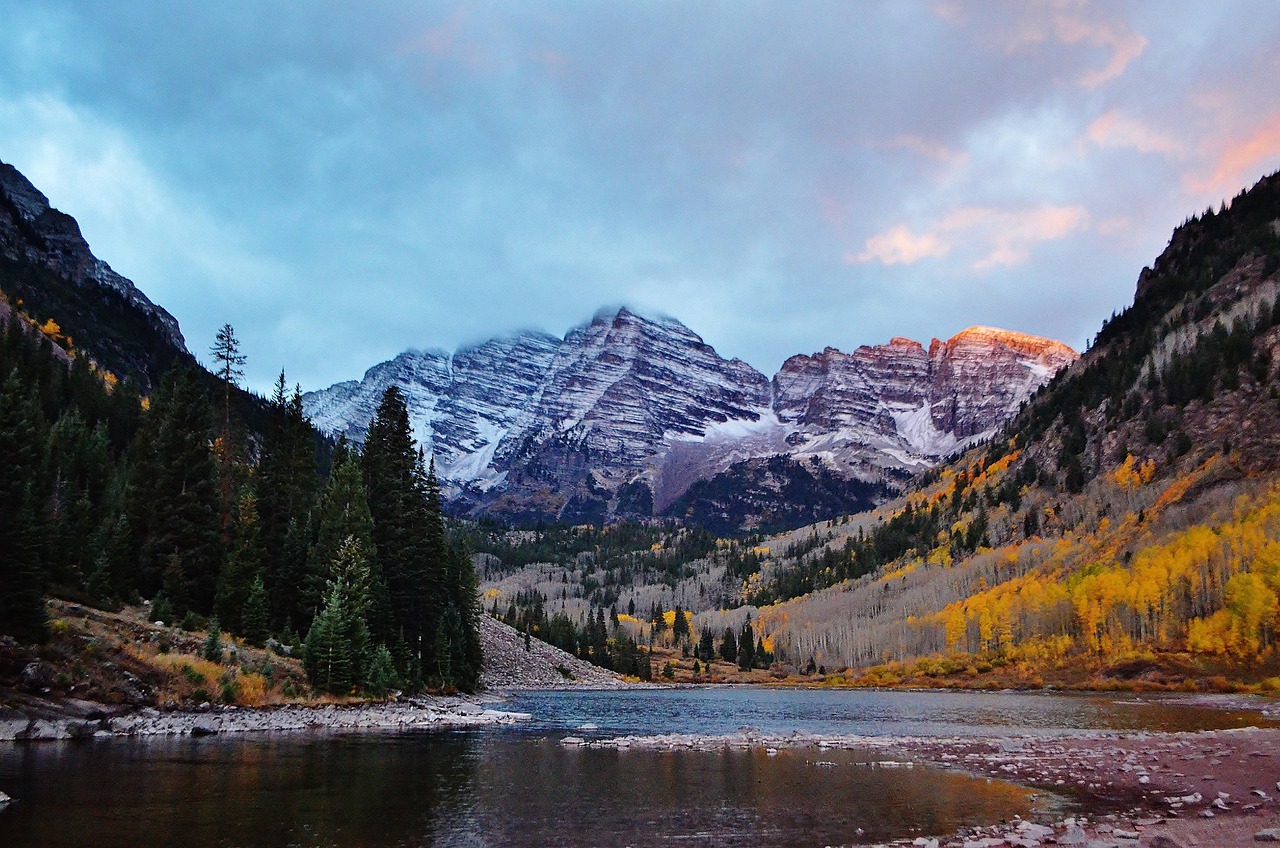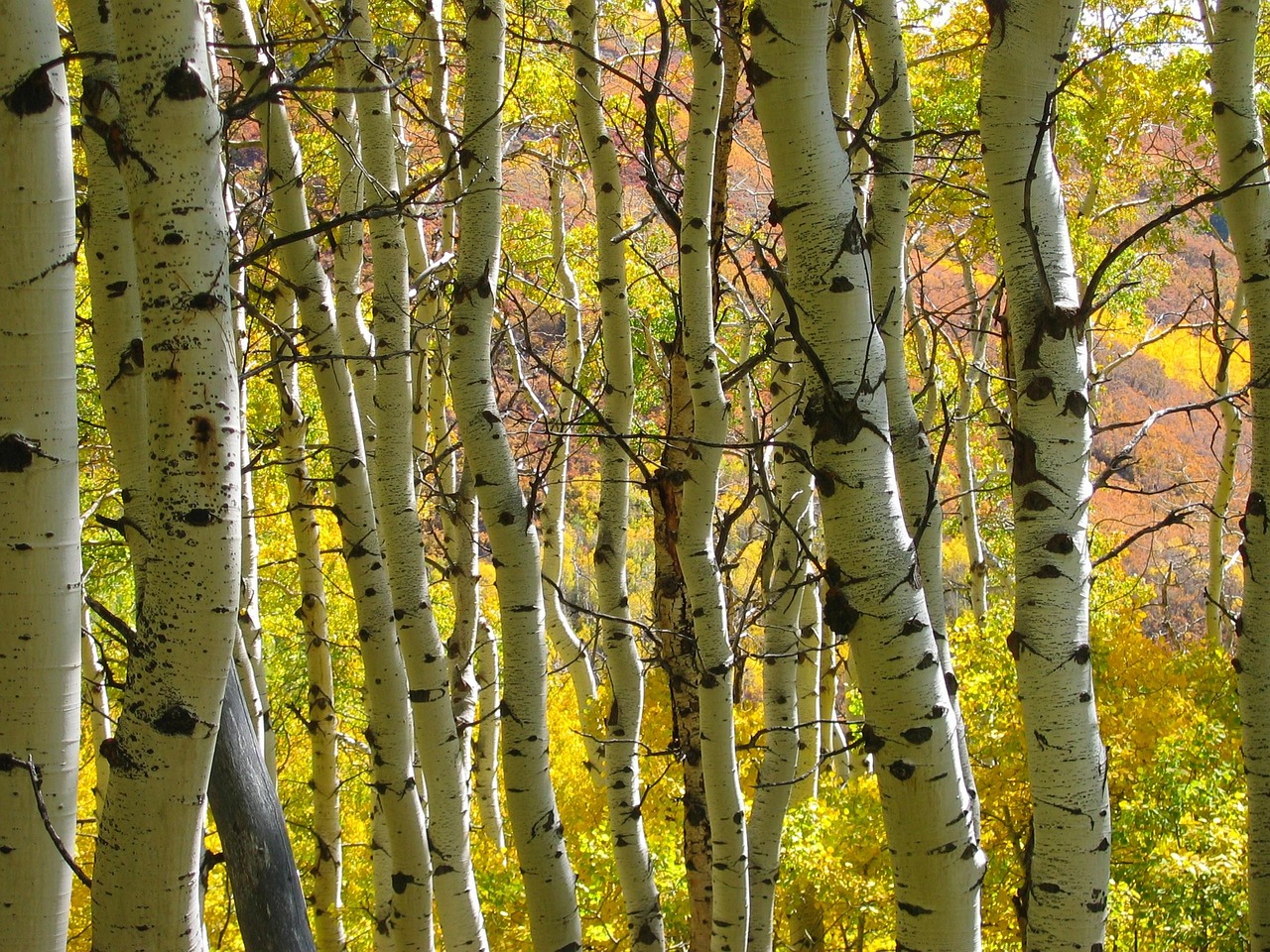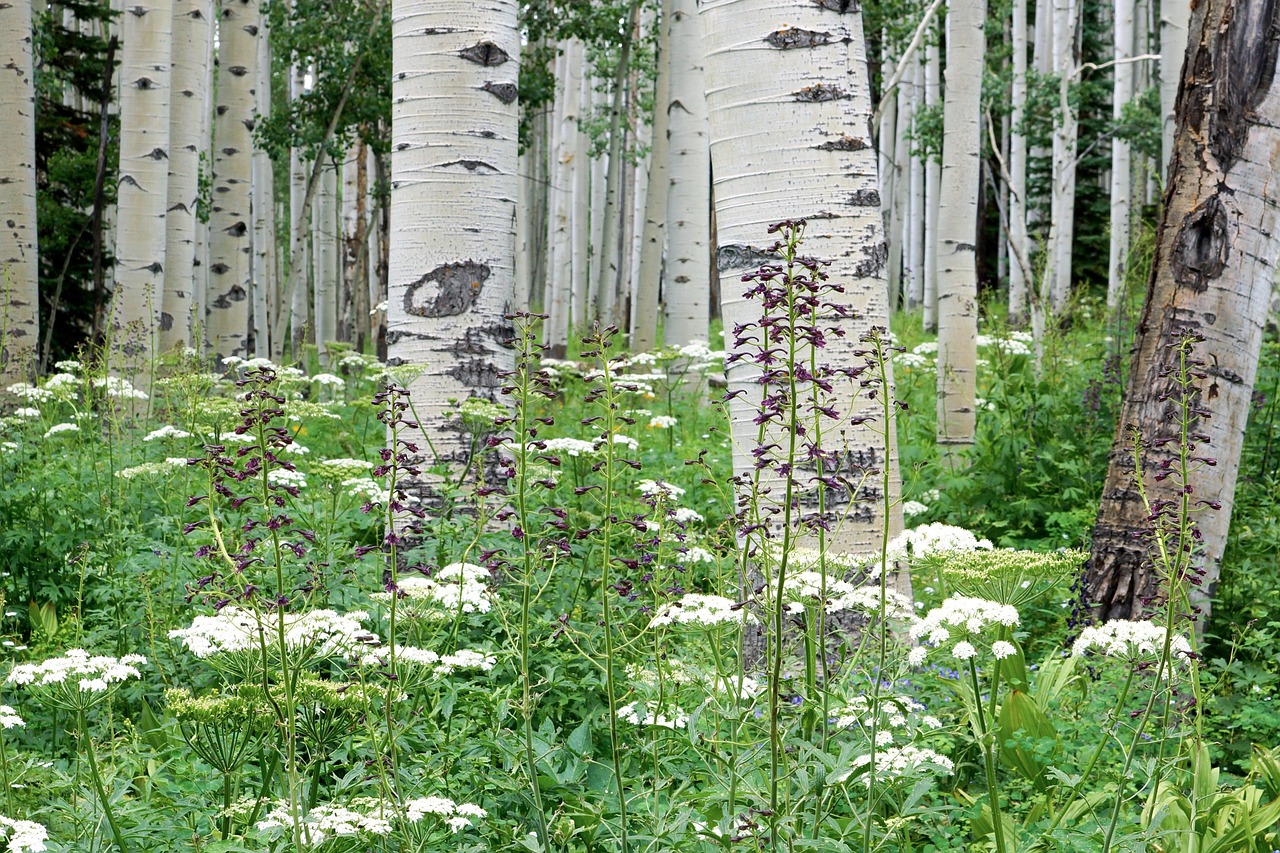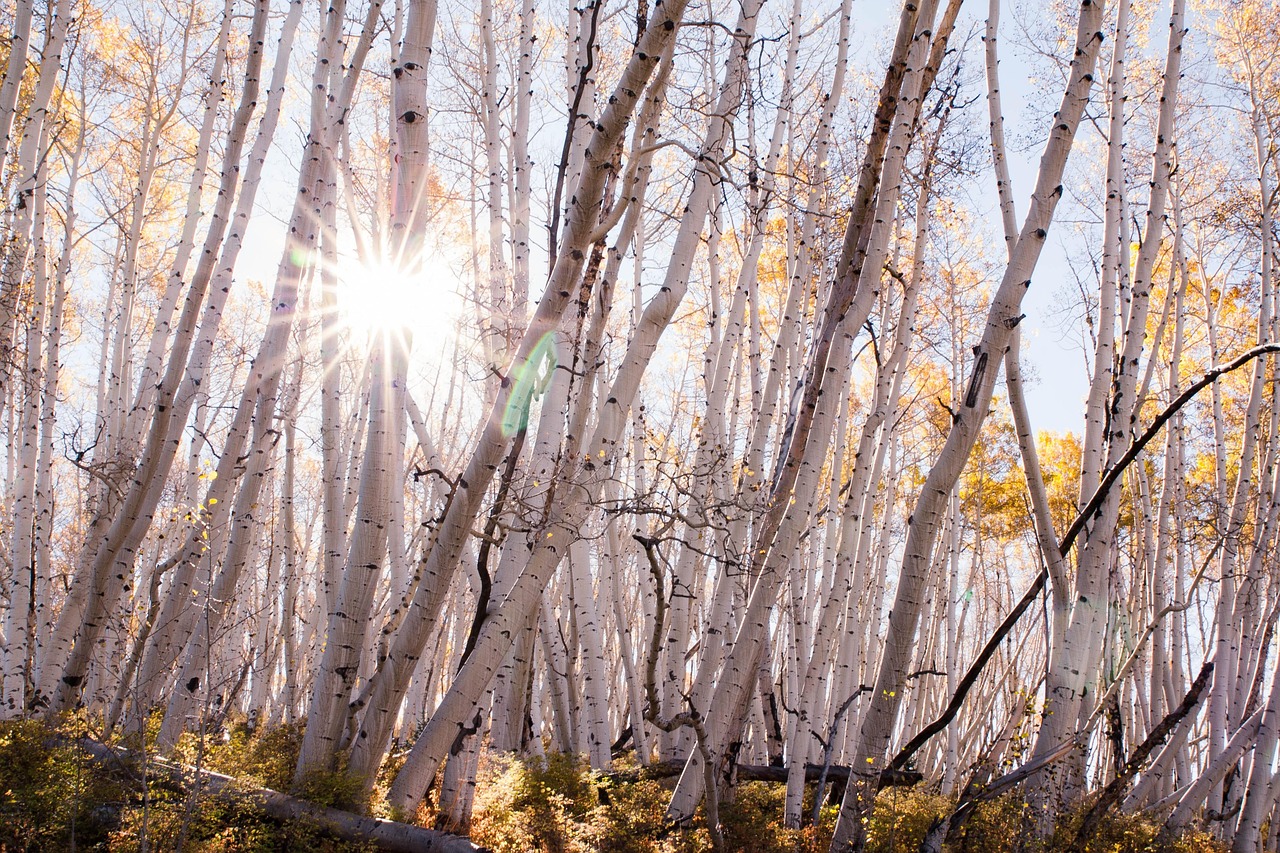Yes, quaking aspen can be successfully started from seed, but it requires specific conditions and care. The seeds are small and need proper stratification to germinate effectively. With the right approach, growing this beautiful tree from seed can be a rewarding endeavor.
Understanding Quaking Aspen

Quaking aspen (Populus tremuloides) is a deciduous tree known for its distinctive white bark and fluttering leaves. These trees are native to North America and thrive in a variety of environments, particularly in cooler climates. Quaking aspens are famous for their stunning fall foliage, which displays vibrant shades of yellow and gold.
This tree species is not only visually appealing but also plays an essential role in forest ecosystems. It serves as a habitat for various wildlife species and contributes to soil health through its root system. Quaking aspens are also known for their ability to reproduce through both seeds and root suckers, making them resilient in changing environments.
While many gardeners may opt for planting aspen from root suckers due to their ease of establishment, starting quaking aspen from seed can be a fulfilling challenge. To successfully grow quaking aspen from seed, it is crucial to understand their germination requirements and growth habits.
Seed Characteristics and Germination
The seeds of quaking aspen are tiny, with each tree producing thousands of them annually. They are lightweight and can be easily dispersed by wind. However, their small size means that they require specific conditions to germinate effectively.
Here are some key characteristics of quaking aspen seeds:
| Characteristic | Description |
|---|---|
| Size | Approximately 1/16 inch long |
| Weight | Lightweight, allowing for wind dispersal |
| Viability | Seeds remain viable for about 1 year |
| Germination Rate | Varies; often low without proper treatment |
To enhance germination rates, the seeds require a process known as stratification. This involves exposing them to cold temperatures for a specific period. Typically, this means placing the seeds in a moist medium in the refrigerator for about 30 days before planting. This mimics the natural winter conditions that seeds would experience in the wild.
Planting Conditions
After stratification, it is time to plant the seeds. Quaking aspen seeds prefer well-draining soil enriched with organic matter. Here are some important considerations when preparing to plant:
- Timing: Plant seeds in early spring as soon as the soil can be worked.
- Location: Choose a sunny spot with plenty of light.
- Soil Preparation: Loosen the soil and mix in compost to improve drainage and nutrients.
Once the seeds are planted, they should be lightly covered with soil. Maintaining consistent moisture is critical during the germination phase. It may take several weeks for the seeds to sprout, so patience is necessary.
Caring for your young quaking aspens will involve regular watering and monitoring for pests or diseases. With proper attention and suitable conditions, these trees can thrive and become a beautiful addition to any landscape.
Care and Maintenance for Young Quaking Aspens
Once your quaking aspen seeds have germinated and the seedlings emerge, proper care is essential for their healthy growth. Young trees are particularly vulnerable to environmental stresses and pests. Providing the right conditions and attention will help ensure they thrive in their early stages.
Watering Practices
Watering is crucial during the first few months after germination. Newly sprouted seedlings need consistent moisture, but care should be taken to avoid overwatering, which can lead to root rot. Here are some guidelines for watering:
- Frequency: Water every few days, especially during dry spells. Monitor the soil moisture regularly.
- Amount: Provide enough water to keep the soil consistently moist but not soggy.
- Soil Type: Sandy soils may require more frequent watering compared to clay soils, which retain moisture longer.
Fertilization
Although quaking aspens can grow in a variety of soil types, they benefit from additional nutrients during their early growth stages. Fertilizing the seedlings will enhance their growth. Consider the following:
- Type of Fertilizer: Use a balanced, slow-release fertilizer that is suitable for young trees.
- Application Timing: Apply fertilizer in early spring when new growth begins. Follow the manufacturer’s instructions for application rates.
- Organic Options: Compost or well-rotted manure can also provide necessary nutrients without the risk of chemical buildup.
Pest and Disease Management
Young quaking aspens can be susceptible to various pests and diseases. Early detection and management are key to keeping your trees healthy. Here are some common issues to watch for:
- Aphids: These small insects can cluster on leaves, causing distortion. Use insecticidal soap or neem oil for control.
- Leaf Spot: Fungal infections can result in spots on leaves. Ensure good air circulation and avoid overhead watering to reduce humidity.
- Rodents: Small animals may damage young bark. Using tree guards can help protect the trunks from gnawing.
Environmental Considerations
Caring for quaking aspens also involves considering their environmental needs. Understanding their preferred habitat will help you create conditions that support their growth.
Light Requirements
Quaking aspens thrive in full sun but can tolerate partial shade. However, they will grow more vigorously with ample sunlight. When planting, consider these factors:
- Sun Exposure: Select a location that receives at least six hours of direct sunlight per day.
- Spacing: If planting multiple seedlings, space them adequately to ensure each tree receives sufficient light.
Soil Conditions
This species prefers well-draining soil rich in organic matter. Here are some additional soil considerations:
- pH Level: Quaking aspens do well in slightly acidic to neutral soil (pH 6.0 to 7.5).
- Soil Texture: Loamy soil is ideal, but they can adapt to sandy or clay soils with proper care.
Climate Adaptability
Quaking aspens are adaptable to various climates but prefer cooler temperatures. They are commonly found in regions with cold winters and mild summers. When selecting a planting site, consider these climate factors:
- Hardiness Zones: Quaking aspens thrive in USDA hardiness zones 3 through 7.
- Drought Tolerance: While young trees need regular watering, established aspens can tolerate short drought periods.
By understanding and addressing these care and environmental factors, you can successfully nurture your quaking aspen seedlings into mature trees. This dedication will contribute to the beauty and health of your landscape for years to come.

Propagation Alternatives for Quaking Aspen

While starting quaking aspen from seed is a viable method, there are alternative propagation techniques that can be considered. Each method has its own advantages and can be chosen based on the specific gardening goals and conditions.
Root Suckers
Quaking aspens are well known for their ability to propagate through root suckers, which are shoots that emerge from the roots of an established tree. This natural method can be a more straightforward way to grow new trees. Here’s what you should know about propagating quaking aspens using root suckers:
- Identification: Look for young shoots growing around the base of an existing aspen tree. These suckers are often found within a few feet of the parent tree.
- Timing: The best time to dig up root suckers is in early spring when they are just beginning to grow.
- Transplanting: Use a spade to carefully dig out the suckers along with a portion of the root system. Replant them immediately in a prepared site or pot.
Cuttings
Another method of propagation is taking cuttings from healthy branches. Although more challenging than using root suckers, it can be done successfully with proper techniques. Here’s how to propagate quaking aspens from cuttings:
- Selection: Choose healthy, young stems that are around 6-8 inches long. Make the cut just below a node.
- Preparation: Remove any leaves from the bottom half of the cutting to prevent rot when planted.
- Rooting Hormone: Dip the cut end in rooting hormone to promote root growth.
- Planting: Insert the cutting into a pot filled with moist potting soil. Keep the soil consistently moist and place the pot in indirect sunlight.
Grafting Techniques
Grafting is a more advanced method that involves joining two plants together so they grow as one. This technique can be used to propagate quaking aspens if you want to take advantage of specific rootstock characteristics. Here are some key points about grafting quaking aspens:
- Rootstock Selection: Choose a compatible rootstock that is adapted to your local soil and climate conditions.
- Grafting Method: Common methods include whip-and-tongue grafting or cleft grafting. These techniques require precision and practice.
- Caring for Grafts: After grafting, protect the graft union with grafting tape or wax to prevent moisture loss and infection.
Challenges in Growing Quaking Aspen from Seed
While growing quaking aspen from seed can be rewarding, it comes with its own set of challenges that gardeners should be aware of. Understanding these potential obstacles can help improve success rates.
Seed Viability Issues
The viability of quaking aspen seeds can be affected by various factors. Recognizing these issues can help ensure successful germination:
- Aging Seeds: The germination rate decreases as seeds age, so it is best to use fresh seeds collected within the last year.
- Storage Conditions: Store seeds in a cool, dry place to maintain viability until planting time.
Pest and Disease Threats
Younger seedlings are particularly susceptible to pests and diseases. Being proactive can mitigate these risks:
- Damping Off: This fungal disease affects seedlings and can be prevented by ensuring good air circulation and avoiding overwatering.
- Pest Infestations: Keep an eye out for common pests like aphids or spider mites. Regular inspection and organic treatments can help manage infestations.
Long-term Care for Mature Quaking Aspens
Once your quaking aspens have matured, they will require ongoing care to maintain their health and vitality. Proper management will also enhance their aesthetic and ecological value in your landscape.
Pruning and Thinning
Mature quaking aspens benefit from occasional pruning, which helps maintain their shape and overall health. Consider these tips for effective pruning:
- Timing: Prune during late winter or early spring before new growth begins.
- Focus on Deadwood: Remove any dead or diseased branches to prevent decay.
- Thinning: If trees are crowded, consider thinning them to improve light penetration and air circulation.
Monitoring for Stress Signs
Mature trees may show signs of stress due to environmental factors like drought or extreme weather conditions. Be vigilant for symptoms such as:
- Pale Leaves: This may indicate nutrient deficiency or water stress.
- Bark Damage: Check for signs of injury or disease on the trunk and branches.
Taking proactive steps in both initial growth and long-term care will help ensure that your quaking aspens flourish for generations to come.
Companion Planting and Ecosystem Benefits
I

n addition to their beauty and utility, quaking aspens play a vital role in their ecosystems. Understanding how they interact with other plants and animals can enhance your gardening strategy. Consider incorporating companion planting techniques to maximize the benefits provided by these trees.
Companion Plants
Companion planting involves growing different plants in proximity for mutual benefit. Here are some plants that pair well with quaking aspens:
- Wildflowers: Native wildflowers can attract pollinators and beneficial insects, which help maintain a healthy ecosystem.
- Herbs: Growing herbs like mint or thyme at the base of aspens can deter pests while providing culinary benefits.
- Ground Covers: Low-growing ground covers can help retain moisture in the soil and prevent weed growth around the trees.
By integrating these companion plants, you can create a more diverse and vibrant landscape that supports not only your quaking aspens but also the surrounding wildlife.
Ecosystem Contributions
Quaking aspens are more than just attractive trees; they contribute significantly to their ecosystems:
- Habitat: They provide shelter and food for numerous wildlife species, including birds, mammals, and insects.
- Soil Improvement: Their extensive root systems help prevent soil erosion and improve soil structure, enhancing fertility for other plants.
- Carbon Sequestration: As fast-growing trees, quaking aspens absorb significant amounts of carbon dioxide, contributing to climate regulation.
By planting quaking aspens, you are making a positive impact on the environment and promoting biodiversity in your area.
Final Thoughts
Starting quaking aspen from seed can be a fulfilling horticultural experience. With their unique beauty and ecological importance, these trees are a worthy addition to any garden or landscape. While growing from seed requires patience and care, understanding the specific needs and challenges associated with quaking aspens will greatly increase your chances of success.
Utilizing various propagation methods such as root suckers or cuttings can provide alternative pathways for establishing these trees in your garden. Additionally, focusing on proper care through watering, nutrition, and pest management will ensure the healthy growth of your young aspens.
As you nurture these trees, consider their role in supporting local ecosystems through companion planting and habitat creation. By fostering a diverse environment, you not only enhance your landscape’s beauty but also contribute positively to the health of the environment.
In summary, with the right knowledge and dedication, starting quaking aspens from seed or other methods can lead to a thriving population of these remarkable trees. Their long-term benefits for both you and the ecosystem make them an invaluable choice for any gardener or land steward.
